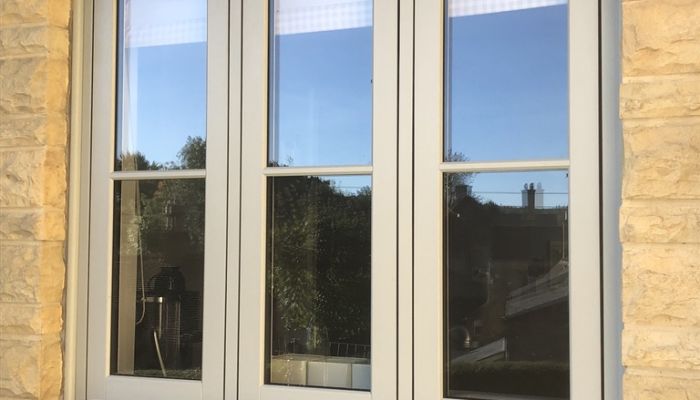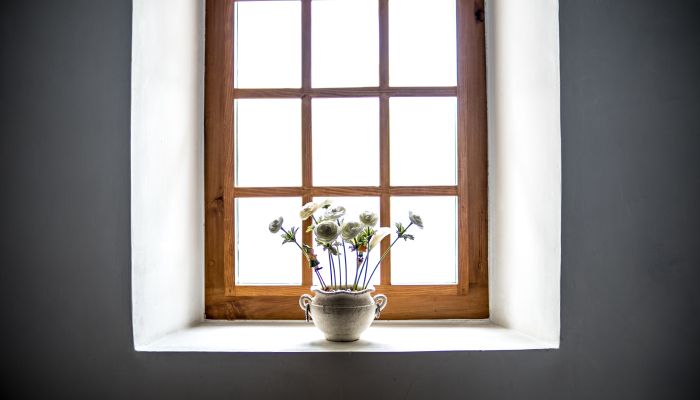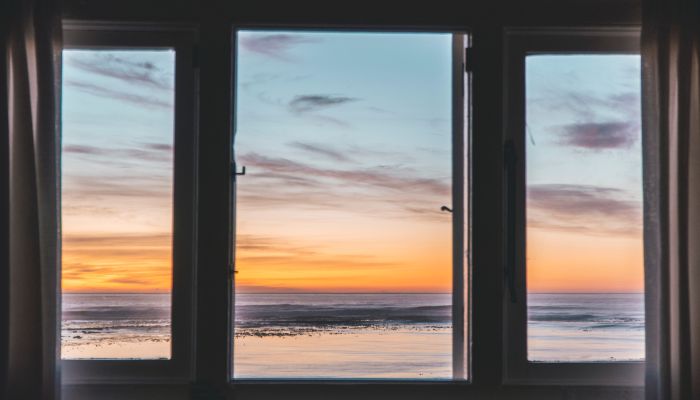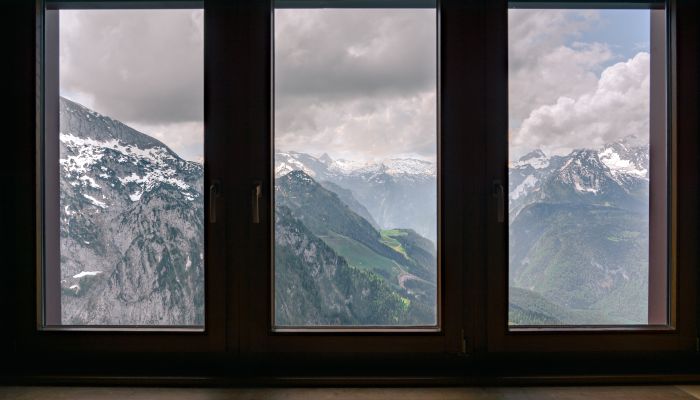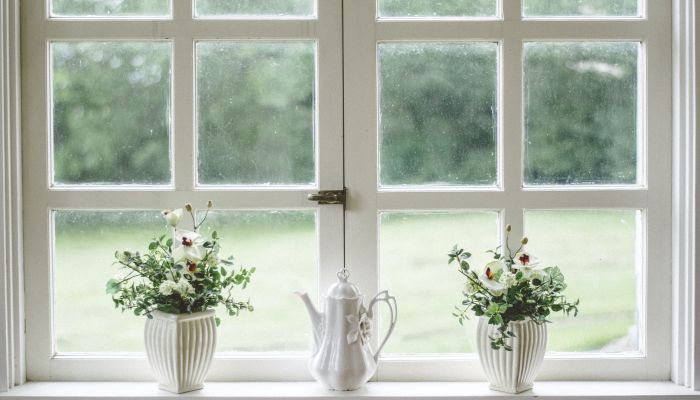Obscure Glass: Types, Production, and Applications
Obscure Glass: Types, Production, and Applications
Are you ready to see through the craft of obscure glass? This post explores the world where glass isn’t just clear, it is a form of art. If you’re looking for supply and fit or you’re searching for supply only… this is the place for you. This article has all of the information you need about obscure glass, the different types of obscure glass and how they can be used.
What is Obscure Glass?
Obscure glass can also be known as privacy glass or textured glass. It is a type of glass that is designed and made to obscure or obstruct the view through it but also allowing the natural light to still pass through.
They are made intentionally to reduce the transparency of the window and provide the person inside with privacy, by distorting the view of the objects and / or people on the other side of the glass. Obscure glass ranges can come in many different patterns, textures and privacy levels.
Obscure glass is usually used in windows, doors and shower screens or partitions, where both privacy and natural light are wanted. Obscure glass can be an aesthetic but practical solution for the interior and exterior of your home.
Types of Obscure Glass
Frosted Glass
Frosted glass is a type of obscure glass that has a translucent, but non-transparent look. Frosted glass is achieved by etching the surface of the glass or by using acid to create a frosted effect on the glass. Etched glass and acid etched glass are both examples of frosted glass, they are most commonly used in bathroom windows, front doors & side screens as well as partitions or shower screens in the bathroom. When the glass has been etched or acid-etched it becomes diffused,and allows natural light to pass through while also obscuring the view from either side of the glass for privacy purposes.
Textured Glass
Textured glass is a versatile type of obscure glass that has patterns on the glass panes that create a unique and tactile effect on the glass. The glass is again, used to diffuse light and provide privacy on both sides of the glass as well as adding dimension to your space.
Textured glass can come in a variety of different surface patterns ranging from simple to complex for these patterns. They are created during the manufacturing process.
The opacity of the textured glass can also vary depending on the design and pattern of the glass.
Some textured glass can be near enough transparent, with a lot of visibility being allowed through whereas other patterns of textured glass may be more opaque providing more privacy. Textured glass can be found in different levels of privacy with different kinds of patterned glass depending on the privacy level you want. Here is an example of the different patterns you can get for different levels of privacy:
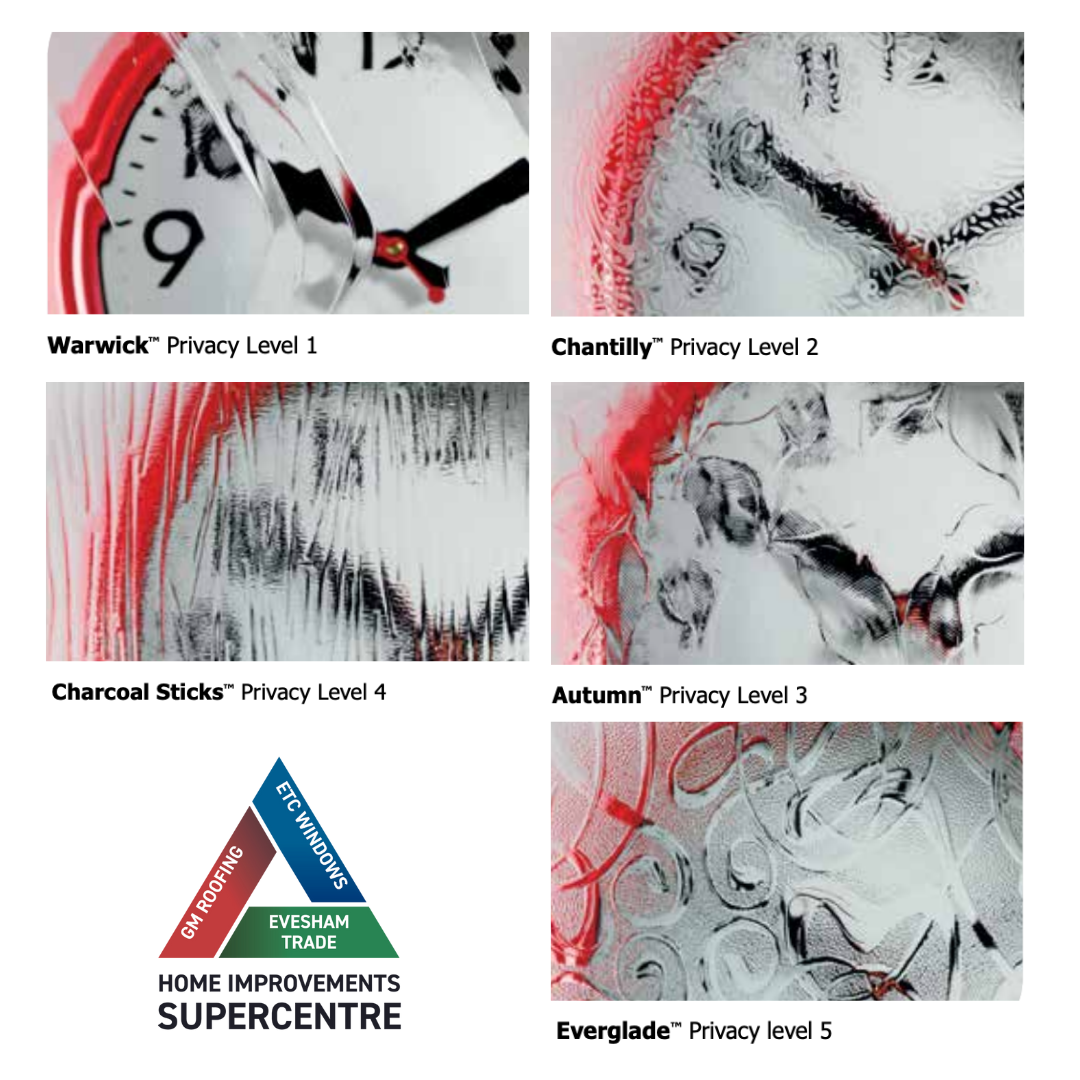
How Obscure Glass is Made
Acid-Etching
The process of acid-etching with glass begins with the preparation of the glass by cleaning it to remove any dirt or dust, followed by planning out the design or pattern you want to be etched onto the glass. The way this is most commonly done is by using acid resistant masking materials on the glass, usually a wax or a vinyl.
When the design has been applied and carried out the acid-etching solution is then applied to the remaining exposed areas of the glass. The acid then starts to react with the glass creating a frosted effect on the glass. The longer the acid gets left on the glass will determine how frosted the glass will become.
After the desired frosted level is achieved the acid gets removed and the masking materials removed the frosted areas will be revealed and clear glass remains to complete the desired pattern and effect.
Textured Process
Textured glass is made during the process of manufacturing the glass itself. There are a few different steps for how textured glass is made during the manufacturing process. Starting with:
- Glass composition. The process starts off with the selection of the glass composition. Clear glass, also known as float glass, is usually the base material used for creating textured glass.
- Creating the patterns. The glass is passed through a pair of rollers or moulds that have specific designs on the surfaces. The patterns can be raised, sunken or smaller intricate designs of geometric shapes depending on the customer's desired texture.
- Heating. The glass is then heated in a furnace at a high temperature to make it malleable. The softened glass allows for the desired texture to be pressed or moulded onto the surface of the glass.
- Transfer. When the glass is heated and passes through the rollers and moulds. The texture is then transferred onto the glass, creating the desired texture.
- Cooling. After the pattern is transferred the glass is slowly cooled to room temperature. Controlled cooling is key to ensure the glass doesn’t break or crack in this process.
- Cutting. After the cooling process the glass can be cut and shaped for the desired product you require.
Privacy Levels Explained
Privacy glass comes in various levels of opacity that offer different levels of visibility and flow of light. There are different types of privacy glass you can choose from with different levels of privacy in each one of these different types. The different types of privacy glass include: Clear glass, tinted glass, frosted glass, patterned / decorative glass, textured glass & mirrored glass.
Privacy glass is usually offered in 5 different levels of privacy, with level 1 being very transparent and minimal privacy and level 5 being intricate patterns and you are not able to see through the glass.
For each of these glass types there are many different patterns and designs you can choose from to suit your home's aesthetic and your personal taste. There are simple designs such as general blur and blurred line effects and on the other end of the scale there are intricate patterns such as floral patterns and geometric patterns. Here are a few examples of lower level privacy glass and higher level privacy glass.
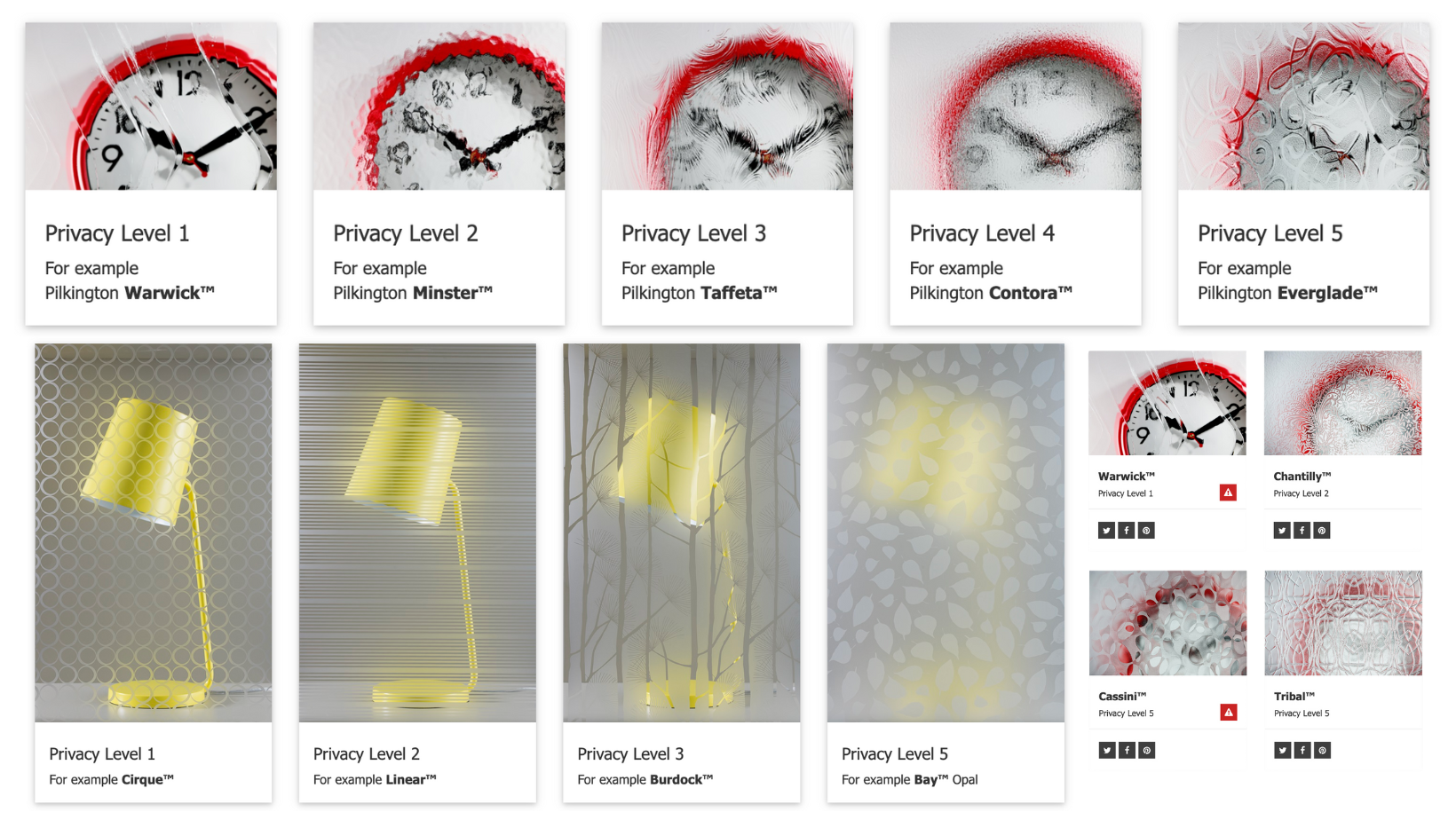
Applications of Obscure Glass
Obscure glass has the ability to provide privacy by diffusing light and it can also enhance aesthetics on your property. You can use obscure glass in many ways in your home. Some of these ways include:
Windows
Obscure glass can be used in windows to limit the visibility from the outside into your home while still allowing plenty of natural light into your home. Places that are most common to find obscure glass in windows in a home are the bathrooms, bedrooms and windows that may be on ground level of the home, places where privacy is most important in the home.
Doors
It is also common to find obscure glass in doors around the home as they serve functionally and aesthetically. Obscure glass can be used in many different types of doors around the home, such as front doors, interior doors and sliding doors. It is most common to find obscure glass in front doors, bathroom doors and patio doors.
Shower Screens
Obscure glass is very popular when it comes to shower doors and shower screens. The glass helps to provide privacy in the bathroom while also allowing for natural light to still flow through the room and also to create a more open feel to the room and a lighter feel for the room.
Partitions and Room Dividers
Obscure glass can also be used to create room partitions while adding and keeping elegance in the room and keeping the idea of open concept rooms in play. You can most commonly find obscure glass partitions and room dividers in rooms like the living room, offices and other commercial spaces where privacy is wanted but also the idea of open concepts.
Popular Patterns and Styles
Here at Evesham Trade Centre our top three most popular styles and patterns of obscure glass are:
- Satin. Satin glass is a pane of glass that is etched and has a frosted appearance. It offers lots of natural light to continue to flow through while still having a high privacy level. Satin finish obscure glass has the highest privacy rating of obscure glass. It is most commonly used for partitions within the home but can also be found in windows and doors.
- Cotswold. The cotswold obscure glass pattern is a simple one but highly effective in keeping the privacy of your home at a high level. Cotswold obscure glass is among the most popular privacy glass options. It has a privacy rating of level 5 without blocking any flow of natural light at all.
- Stippolyte. Stippolyte obscure glass again is a minimal option with a random pattern that is unnoticeable and not too stand out. It is a textured glass that has a level 4 privacy rating and is used in many different ways including being used in doors and windows around the home.
Choosing the Right Obscure Glass for Your Needs
Choosing the right obscure glass for you and your home involves thinking about different factors such as the level of privacy you would like, why you want the glass and what you will use it for as well as any aesthetic preferences that you have. Things you can consider to help you make the right choice include:
- Identifying privacy needs. Determine what level of privacy glass you are looking for in the chosen space. Take a look at some samples and pictures of the glass options to determine the best level of privacy for you and your home.
- Where will the glass be? Consider the placement and application of your obscure glass. Different uses for the obscure glass may need different levels of privacy. For example bathroom windows may need a higher privacy rating than a decorative glass partition in your living room.
- Assessing the light flow in your home. When choosing your obscure glass type you should determine how much natural light you would like to allow into your living space. Most obscure glass allows an abundance of natural light to flow through however some don't allow as much as others. If keeping a bright and open feel to your home is important consider choosing a type of obscure glass that allows enough natural light for your preference into your home.
Conclusion
And there we have it, a look into the captivating world of obscure glass. From looking at frosted glass to textured windows there are an abundance of options for different types of obscure glass and different production options to create the perfect glass for your home.
So whether you’re looking to renovate your bathroom or switch up the exterior of your home, privacy glass can be included in many ways around your home and keep your home private.
If you are looking to get obscure glass in your home but you’re not quite sure what kind or you want to see what it looks like in person before ordering then come down to our trade centre in Evesham at: Unit D5, Enterprise Centre, Vale Business Park, D5 Enterprise Way, Evesham WR11 1GS.
We have many samples and examples we can show you to help you make the right decision for your new obscure glass in your home.
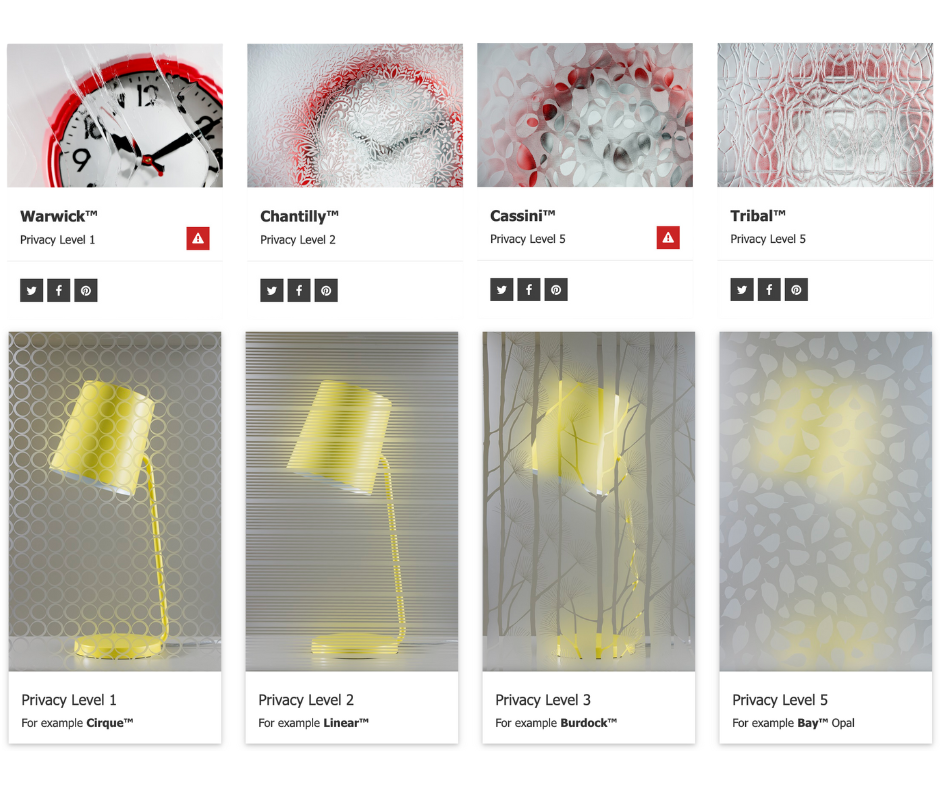
FAQs
Frosted glass is one type of obscure glass, revealing a distorted image on the other side of the glass. It can be distinguished by its white opaque frosting, which offers a very hazy transparency. However, this is not the same as being opaque. Obscure glass still allows large amounts of light to pass through it, illuminating an area. While an opaque surface, such as a wall, doesn’t allow any light through.
Frosted glass is available in almost any required pattern. Simple and detailed designs are available with partial obscurity as an option.
Obscure glass can be tempered to improve strength and remove the risk of shattering. Obscure tempered glass requires much more force to break it than ordinary glass. In the event of breakage, safer fragments are found, instead of larger sharp pieces.
Obscure glass is tempered by heating to high temperatures, then using jets of cold air to provide a cooling effect. As a result, causing the outer layers to cool and contract at a higher rate than the inner material. Thanks to this method, glass is placed under patterns of stress, which in turn greatly increases the force required to shatter the glass. In addition to this, the stress patterns ensure that the obscure toughened glass breaks into the small rounded pieces typical of tempered glass.
Expert Obscure Glass Installation for Enhanced Privacy and Style
Discover the art of obscure glass installation with ETC Windows. Offering a range of options like satin, sandblasted, and tinted glass, our installations ensure privacy while maintaining natural light flow. Whether for bathrooms, bedrooms, or other spaces, we customize to your needs. Our expertise in obscure glass assures both functionality and elegance in your home.
